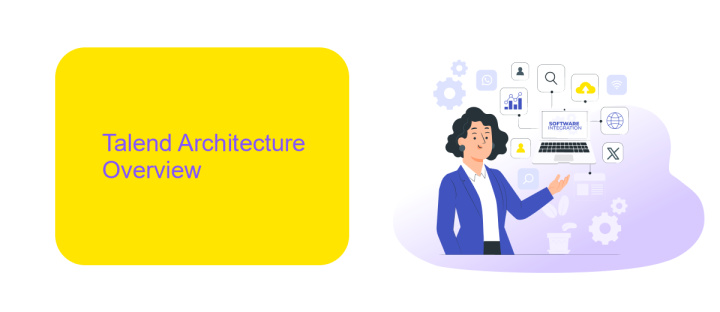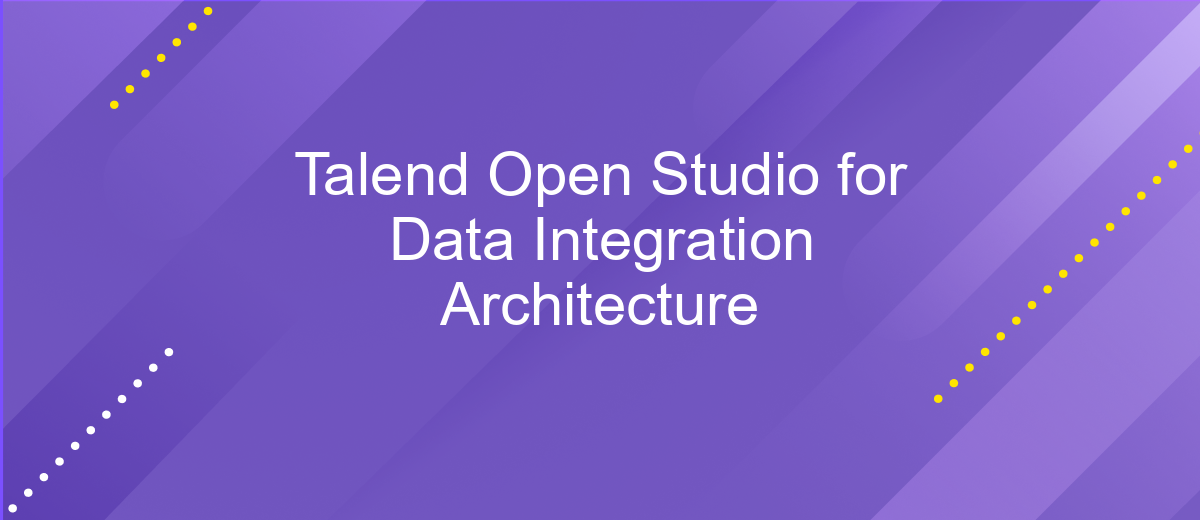Talend Open Studio for Data Integration Architecture
Talend Open Studio for Data Integration is a powerful, open-source tool designed to streamline and simplify the process of data integration. With its user-friendly interface and robust architecture, it enables organizations to efficiently manage, transform, and integrate data from various sources. This article delves into the core architecture of Talend Open Studio, highlighting its key components and functionalities.
Introduction
Talend Open Studio for Data Integration is a powerful and versatile open-source tool designed to streamline the process of data integration. This software provides a comprehensive suite of features that enable users to extract, transform, and load (ETL) data from various sources to target systems. Its user-friendly interface and drag-and-drop functionality make it accessible for both technical and non-technical users, facilitating efficient data management and integration.
- Open-source and free to use
- Supports a wide range of data sources and targets
- Drag-and-drop design interface
- Scalable and flexible architecture
- Comprehensive documentation and community support
By leveraging Talend Open Studio for Data Integration, organizations can ensure seamless data flow across disparate systems, enhancing data quality and consistency. Whether you're dealing with big data, cloud migrations, or routine data transfers, Talend provides the tools needed to handle complex data integration challenges efficiently. Its robust architecture and extensive feature set make it an invaluable asset for any data-driven enterprise.
Talend Architecture Overview

Talend Open Studio for Data Integration is a powerful and versatile tool that streamlines the process of data integration. Its architecture is designed to be modular and scalable, allowing users to handle a wide range of data integration tasks efficiently. The core components include the Talend Studio, a graphical development environment, and the Talend Runtime, which executes the integration jobs. The repository stores all project metadata, ensuring consistent and centralized management of data integration processes. Additionally, Talend leverages a variety of connectors and components to interact with different data sources and targets, providing seamless integration across diverse systems.
One of the key features of Talend's architecture is its ability to integrate with external services like ApiX-Drive. ApiX-Drive enhances Talend's capabilities by offering automated integration with numerous applications and services. This allows users to set up and manage integrations more efficiently, reducing the need for manual intervention and ensuring real-time data synchronization. By combining Talend's robust data integration platform with ApiX-Drive's automation capabilities, organizations can achieve a more streamlined and effective data management process, ultimately driving better business outcomes.
Key Components

Talend Open Studio for Data Integration is a powerful and versatile tool designed to streamline the process of data integration. It offers a comprehensive suite of components that enable users to efficiently manage, transform, and integrate data from various sources. These components work together to provide a seamless and robust data integration experience.
- Repository: Centralized storage for all project metadata, including jobs, schemas, and connections.
- Designer: Graphical interface for building data integration jobs using drag-and-drop components.
- Metadata Manager: Tool for managing and reusing metadata definitions across multiple projects.
- Job Execution: Engine for running and monitoring data integration jobs, ensuring efficient processing.
- Components Library: Extensive collection of pre-built components for various data integration tasks.
- Context Management: Feature to manage different environments and configurations for data integration jobs.
By leveraging these key components, Talend Open Studio for Data Integration empowers organizations to handle complex data integration challenges with ease. The tool's intuitive interface and extensive capabilities make it an ideal choice for both novice and experienced data integration professionals.
Data Integration Architecture

Talend Open Studio for Data Integration is a robust tool designed to streamline and optimize the data integration process. Its architecture is built to handle complex data workflows, ensuring seamless data migration, transformation, and integration across various systems and platforms. The architecture is modular, allowing for flexible and scalable solutions that can be tailored to specific business needs.
At the core of Talend's architecture is the Eclipse-based development environment, which provides a user-friendly interface for designing and managing data integration jobs. This environment supports a wide range of connectors and components, enabling integration with nearly any data source or target. The architecture also includes a metadata repository that centralizes the management of data models, schemas, and other critical information.
- Job Designer: A graphical interface for building data integration jobs.
- Metadata Manager: Centralizes metadata for easier management and reuse.
- Component Library: Extensive library of pre-built connectors and components.
- Execution Engine: Executes jobs and manages resources efficiently.
Talend's architecture ensures high performance and reliability through its distributed execution capabilities. By leveraging parallel processing and load balancing, it can handle large volumes of data with ease. This makes Talend Open Studio for Data Integration a powerful solution for businesses looking to enhance their data management and integration strategies.
- Automate the work of an online store or landing
- Empower through integration
- Don't spend money on programmers and integrators
- Save time by automating routine tasks
Benefits and Use Cases
Talend Open Studio for Data Integration offers numerous benefits, making it a preferred choice for businesses seeking efficient data management solutions. One of its key advantages is its open-source nature, which allows for extensive customization and flexibility. This platform supports a wide range of data sources and formats, enabling seamless data integration across various systems. Additionally, its intuitive drag-and-drop interface simplifies the process of designing and executing data workflows, reducing the need for extensive coding knowledge. The robust community support and regular updates ensure that users have access to the latest features and best practices.
Use cases for Talend Open Studio for Data Integration are diverse and span across multiple industries. For instance, in the retail sector, it can be used to integrate sales data from different channels, providing a unified view for better decision-making. In healthcare, it facilitates the integration of patient data from various sources, enhancing patient care and operational efficiency. Moreover, when combined with services like ApiX-Drive, businesses can automate complex integrations, further streamlining data workflows and reducing manual effort. This makes Talend Open Studio an invaluable tool for organizations aiming to harness the power of their data.
FAQ
What is Talend Open Studio for Data Integration?
What are the key components of Talend Open Studio for Data Integration architecture?
How can I automate data integration tasks in Talend Open Studio?
What types of data sources can Talend Open Studio connect to?
How can I monitor and manage data integration jobs in Talend Open Studio?
Apix-Drive is a simple and efficient system connector that will help you automate routine tasks and optimize business processes. You can save time and money, direct these resources to more important purposes. Test ApiX-Drive and make sure that this tool will relieve your employees and after 5 minutes of settings your business will start working faster.


